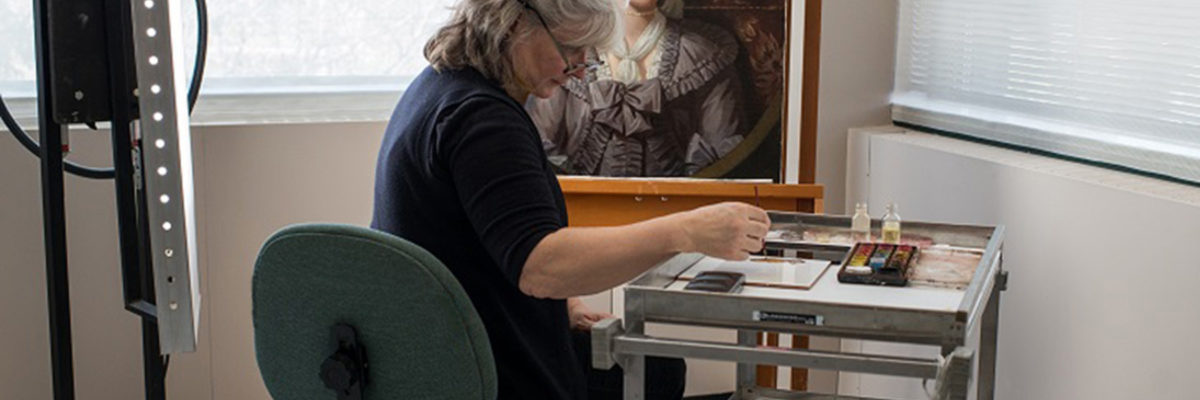
Ian Hodkinson

Photo courtesy of Amanda Sage
Ian Hodkinson is one of the most important figures in the history of art conservation in Canada. His accomplishments include the co-founding of the Canadian Association of Professional Conservators (1971), the creation of the Queen’s University Art Conservation training program (1974), the training of multiple generations of paintings conservators (1974 – 1998), and the conservation of important works of art for communities across Canada.
Ian served on the CAPC Board throughout the 1970’s and 1980’s, helping the organization expand to meet the needs of Canadian collectors, art galleries and museums. He helped to oversee the development of the peer review process that established the credentials of CAPC members, and he advocated strenuously and successfully for the hiring of qualified conservators throughout Canada. Ian was also pivotal in the development of the CAC-CAPC Code of Ethics and Guidance for Practice.
Throughout his fifty year plus career he has set an example of what it means to be a professional conservator, profoundly influencing the perception of the profession for the better. His work on community conservation projects has been particularly noteworthy, including the removal and preservation of William Perehudoff murals from the walls of a Saskatoon meatpacking plant slated for demolition, the conservation of Alex Colville murals at Mount Allison University in Sackville, New Brunswick, and the conservation of the painted interior of Church of Our Lady of Good Hope at Fort Good Hope in the Northwest Territories. As an internationally renowned mural conservator, Ian has also contributed greatly to Canada’s reputation as the home of world-class conservators.
Far from being set in his ways, Ian has always been an innovator, developing and applying new techniques for the conservation of murals in particular. In this regard, he personifies another important characteristic of the professional conservator – an enthusiasm for professional development and life-long learning.
In 2019, Ian was awarded CAPC’s inaugural Award of Distinction in recognition of his fifty years of service to conservation in Canada. He has the respect of his peers for his knowledge and skills, for his dedication to sharing these with emerging conservators, for his leadership, and for his service to Canadian art, whether it be in the halls of national institutions or in small towns across the country. The growth of the discipline of art conservation in this country is in large part due to this extraordinary man.
Fiona Graham
30 November 2020
